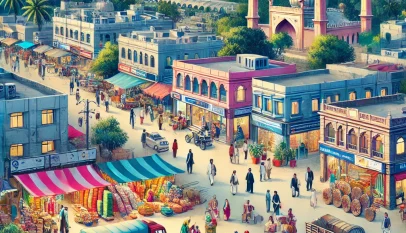Egerp Panipat: A Comprehensive Overview of Its Historical Significance
Egerp Panipat stands out as a significant historical and cultural landmark in India. It represents a crucial chapter in the country’s rich history, particularly due to its association with the wars that shaped the fate of empires. Visitors to Panipat can explore its storied past, which includes battles that determined the power dynamics of the Indian subcontinent.
The town is also known for its textile industry, contributing to its economic significance. This blend of history and modern commerce makes it an intriguing destination for tourists and historians alike. Exploring Egerp Panipat offers insights into how past events continue to influence the present.
For anyone interested in Indian history, the battles of Panipat are essential narratives of conflict and strategy. Engaging with the stories surrounding Egerp Panipat provides a deeper appreciation for the complexities of India’s historical landscape.
Historical Context of Egerp Panipat
The historical context of Egerp Panipat is rooted in its origin and the significance of major battles that took place in the region. The events that unfolded here shaped the political and cultural landscape of the time.
Origin and Significance
Egerp Panipat emerged as a vital location in Indian history due to its geographical positioning and strategic importance. Situated in Haryana, this area served as a key trade route, facilitating economic exchanges between various empires.
The significance of Panipat is amplified by its association with three major battles: the First, Second, and Third Battles of Panipat. Each conflict involved major powers such as the Mughal Empire and the Marathas, making this location a focal point of political struggles in the subcontinent.
Major Battles and Events
The First Battle of Panipat, fought in 1526, marked the beginning of Mughal dominance in India. This battle was between Babur and Ibrahim Lodi, eventually leading to the establishment of the Mughal Empire.
In 1556, the Second Battle of Panipat occurred, where Akbar’s forces faced off against Hemu’s army. This battle solidified Mughal rule, especially under Akbar’s leadership.
The Third Battle of Panipat in 1761 was a significant confrontation between the Maratha Empire and Afghan forces led by Ahmad Shah Durrani. This battle severely weakened the Marathas and shifted the balance of power in the region, impacting subsequent historical events.
Impact on Modern Society
The events surrounding the Battle of Panipat have shaped contemporary cultural and educational paradigms. The historical significance of this battle continues to influence today’s society through cultural expressions and educational discourse.
Cultural Influence
The Battle of Panipat is embedded in Indian culture, often referenced in literature, cinema, and art. Films and novels depict the strategies and valor of the figures involved, reflecting societal values of bravery and sacrifice.
This historical event has inspired various cultural festivals and re-enactments that draw attention to the rich tapestry of India’s past. Traditional music and dance settings also incorporate themes from this era.
Such representations help foster a sense of identity and continuity among communities. They encourage individuals to connect with their heritage while providing platforms for dialogue about historical and modern implications.
Educational Relevance
The significance of the Battle of Panipat is prominently featured in educational curricula across India. It serves as a case study in numerous subjects, including history, political science, and military strategy.
Students learn about the complexities of warfare, alliances, and betrayals that defined this pivotal moment. Moreover, it offers critical insights into the socio-political landscape of 18th-century India.
Academic discussions surrounding the battle encourage analytical thinking and debate. They also highlight its relevance in understanding contemporary issues such as nationalism and cultural identity. Textbooks and lectures integrate these insights, making history accessible and applicable.
Sympathy Flowers Ottawa: Thoughtful Selections for Expressing Condolences
When someone experiences a loss, sending sympathy flowers can convey compassion and suppor…












